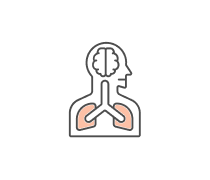The ____ bone is the inferior border of the submental...
The ____ triangle, a subdivision of the anterior triangle, is the...
Deep cervical fascia has four layers: the investing layer, pretracheal...
The posterior triangle of the neck can be subdivided into the...
The investing layer of the deep cervical fascia surrounds the...
The arterial supply of the thyroid gland comes from the superior and...
A cricothyrotomy makes use of the easiest route of access through the...
The roots of the brachial plexus can be found in the scalene gap...
The superficial infrahyoid muscles are the omohyoid and ____...
The posterior triangle of the neck is bounded by the clavicle,...
The transverse _____ cutaneous branch of the cervical plexus is made...
The ___ _____ cutaneous branch of the cervical plexus is made from the...
Muscles in the prevertebral layer of fascia include the prevertebral...
The superior belly of the omohyoid can be found in the ____ triangle...
The ____ _____ artery has no branches in the neck; it's main...
The trapezius and sternocleidomastoid are innervated by CN...
The great _____ cutaneous branch of the cervical plexus is made from...
The omohyoid, sternohyoid, and sternothyroid muscles are innervated by...
The _____ cutaneous branch of the cervical plexus is made from the...
The anterior triangle is subdivided into the submental triangle, the...
The carotid sheath surrounds the common carotid artery, the internal...
The right subclavian artery originates from the _____ artery....
The thyrohyoid motor branch of the cervical plexus is made from the...
The ____ ____ is a location on the common carotid artery slightly to...
___ ____ is a motor branch of the cervical plexus made from the...
The ____ nerve is located on the anterior surface of the anterior...
The branches of the subclavian artery include the vertebral artery,...
Characteristic of Horner's Syndrome is loss of ____ to one side of the...
The collar nodes include the occipital, psoterior auricular,...
The deep infrahyoid (or "strap") muscles are the thyrohyoid and _____...
The submandibular triangle includes the submandibular (salivary)...
The cervical plexus is formed from the _____ rami of C1 to...
The ____ part of the posterior triangle is known as the "carefree"...
Branches of the external carotid artery within the carotid triangle...
Branches of the external carotid artery in the retromandibular space...
Branches of the thyrocervical trunk include the _____ artery, the...
The spinal accessory nerve, CN XI, can be found under the __________...
Two branches of the costocervical trunk are the superior intercostal...
Diffuse, irregular enlargement of the thyroid gland with areas of...
The only branch of the third part of the subclavian artery which may...
The deep nodes of the neck include the superior deep cervical nodes...
The pretracheal layer consists of a collection of fascias that...
The supraclavicular triangle contains the subclavian artery and...
The floor of the posterior triangle includes the scalene, omohyoid,...
The most commonly injured nerve in thyroid surgery is...
















